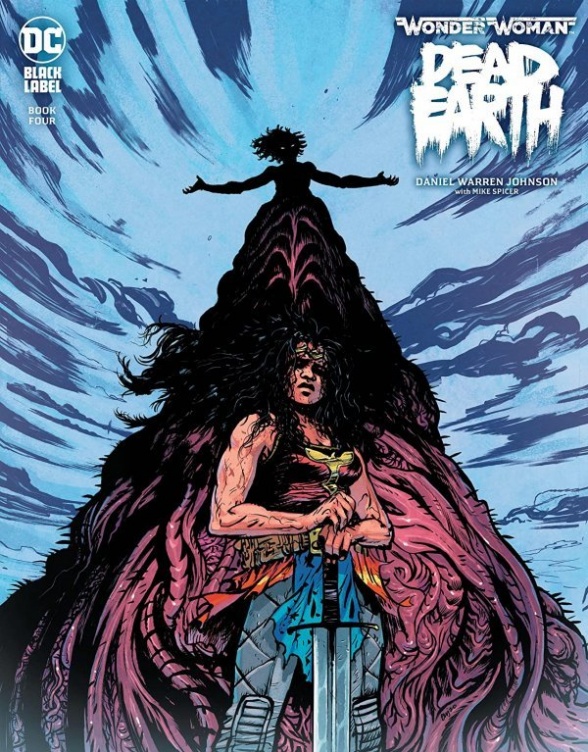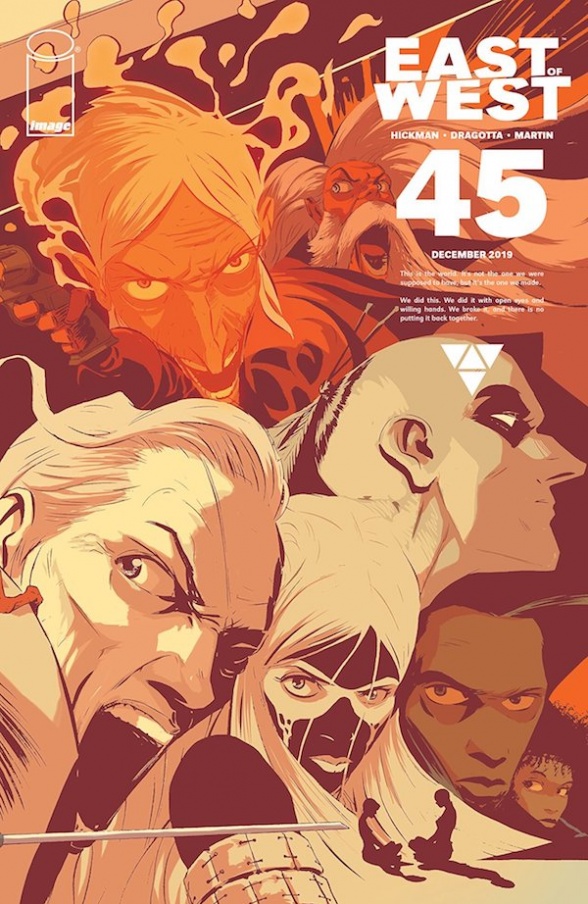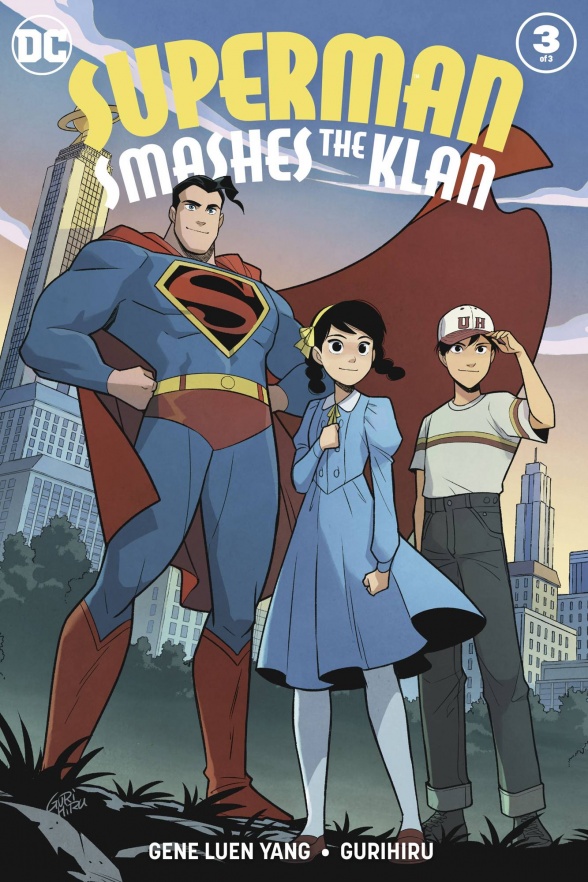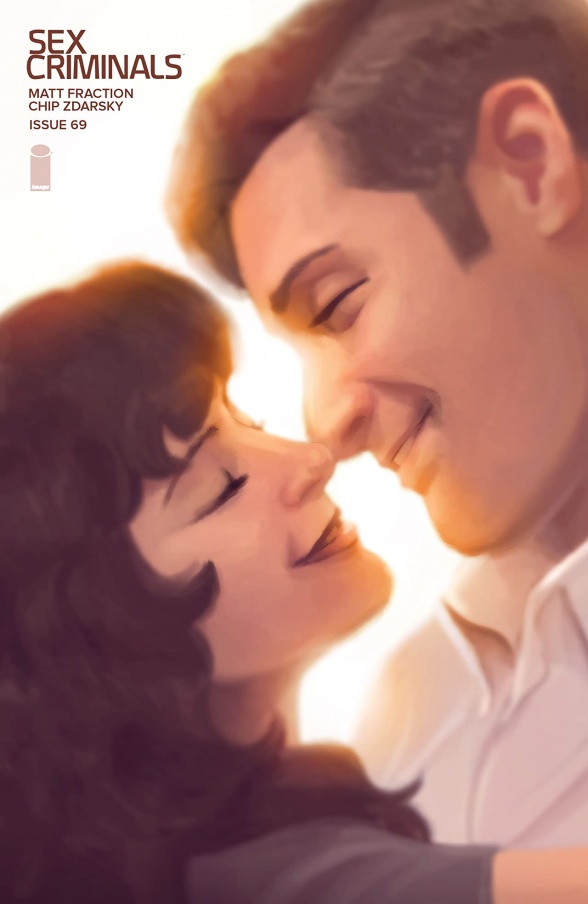
Welcome to the Multiversity Year in Review for 2020! While this has been, by many accounts, a terrible year, there were a number of fantastic comics released in 2020, and over the next ten days, we’ll be highlighting our favorites across 25 categories. If you want to give your thoughts on our picks or share your own, feel free to do so in the comments!
Best Completed Series
There are ongoing series and miniseries and graphic novels. Comics can come in many formats. But there are some universal truths: all series have beginnings and endings. We wanted to let different formats go head to head, so we created a new category to reflect that. Best completed series honors any 2020 comic that published its finale during the year. The series could have been going on for a few months or a few decades. To qualify for this list, a comic needs to be impactful. These are all stories that we think are going to stick in our minds, haunt our dreams, and keep us talking about them for years to come. These are our best completed series for 2020.

5. Alienated
Bullying, suicide, and teen pregnancy have been the biggest “hot button” high school issues for decades. As a result, we’ve been overexposed to those ideas in stories, often done misguidedly or heavy-handedly. In “Alienated,” however, Simon Spurrier and Chris Wildgoose covered all those bases, added in some modern issues like internet radicalism, and used an alien to tie it all together in a way that felt innovative, modern, and completely fresh.
The start of the book was similar to many other slice-of-life books, but even then, Wildgoose’s eye for fashion and Spurrier’s pitch-perfect narration and dialogue made each character feel fully realized. So when the three opposing personalities came across an alien which melded their minds together, I was fully on-board in a way I rarely am with sci-fi. Each issue dealt with a different difficult topic, leaving enough space to fully explore each one, and the whole became even greater than the sum of its parts because of the alien plotline. The increasing narrative tension from issue to issue was also mirrored by Wildgoose and colorist André May, who proved to be just as good at depicting wilder and wilder sci-fi psychedelia as they were at depicting effective slice-of-life. The success of the series really rested in the balance between those two extremes.
It’s a challenge to cover overdone topics, it’s a challenge to keep each issue as interesting as the last, and it’s a challenge to stick the landing. These things would be hard in an original graphic novel, but as a complete miniseries? “Alienated” is the rare one that does it all. -Nick Palmieri

4. John Constantine: Hellblazer
“John Constantine: Hellblazer” is, unfortunately, a completed series. It kills me that DC didn’t just keep our old mate John on life support a little longer, but regardless, it’s a completed series we ‘re looking for and it’s a completed series we’ve gotten, let’s see what made it special.
This series had such a high caliber of creators. Aaron Cambell’s art had a great grip on London’s muck and grime, but that discounts just how candid his facial acting is with his characters. It’s like if someone took Mitch Gerads and kicked him into a river every day until he swore vengeance on the world. Then there’s Matias Bergara; he’s the exact opposite of Campbell, and that’s really what makes the art direction on this series such a triumph. His Constantine is a weasley little ball of stubble and hangover, it’s perfection.
Finally we have Si Spurrier. I honestly can’t tell if he’s entering the industry either thirty years too late, or right as it needs him, I guess it depends on how cynical you want to be. I wish I didn’t have to discount the incredible work of Marcio Takara, John Paul Leon, Jordie Bellaire, Aditya Bidikar and so many others up and down the editorial chain, but as much it pains me, I can’t just talk about this book forever.
At the bottom line, “Constinatine” had a fucking heart to it, it was drilling out a new hole in the strip-minded, guilt-ridden brain of John Constantine, and at the same time actually had something to say about the state of our world. This was the most promising fresh start old Johnny has had in years, a new London, new loveable faces (Tommy Willowtree, I will always love you, as insufferable as you are) and that same old cynicism. “John Constantine: Hellblazer” was, and is, important. So let’s just hope this book can play one more trick on us. -James Dowling
Continued below
3. (tie) Wonder Woman: Dead Earth
“Wonder Woman: Dead Earth” has a perfectly unsatisfying ending. That probably seems like a strange sentence to kick off a write-up on why it’s one of the best completed series of the year, but it’s true. The series, taking place in the aftermath of an apocalyptic event, suggests that there is no good solution to a nuclear-level conflict between humankind and the Amazons. Every choice Diana makes is a difficult one, and has a tactical or personal consequence. There is no clean way out of this. In that way, “Dead Earth” operates with the spirit of great apocalyptic fiction like “The Road”, where you feel just as hopeless as the heroes at times – if you’re even sure who the heroes are. The story never takes the easy way out. There’s no deus ex machina. And in fact, there are some plot threads that are decidedly unexplored, with no certain promise that a sequel will ever come. It might be better that way, because the series’ bittersweet ending lands beautifully. And the art, oh the sweet sweet Daniel Warren Johnson art. As the stakes constantly shift and ramp up for Diana of Themyscira, so does the looming threat of an army of mutated Amazonians. They scorch the already barren earth on giant dragons, riding big beasts with gaping maws that dwarf the DC heroes who themselves usually seem larger than life. In the world of “Dead Earth”, everything might just be too big for them to handle. -Vince Ostrowski

3. (tie) East of West
”We deserve what’s coming to us.”
I know I’m not alone here at Multiversity, thinking that Johnathan Hickman and Nick Dragotta’s biblical-sci-fi-fantasy-Western American parable was one of the best Image comics of the past decade. In equal measures violent and contemplative, the series painted us a picture of a fractured, fictional America, torn apart by race, religion, and class into smaller nations. It was, for all intents and purposes, EXACTLY the kind of book some of us were yearning for – an outlet to chew on our innermost fears about the state of the Nation. Where we’ve come from, and where we’re headed.
It checked off all the Hickman boxes, too: a bend towards nihilism, wife-guy protagonists, monochromatic antagonists, and pie charts. Gotta love those charts. Nick Dragotta has also never looked better. Over the course of the series Dragotta was sharpening his skills, each issue, or arc, looked better than the last- more dynamic, more aggressively his own style. The two worked with colorist Frank Martin and letterer Russ Wooten for the entire series, and by the end, well, that’s what we’re here for, right?
Did “East of West” tie up Hickman’s themes nicely? The answer is a resounding YES. And, to be quite honest, it took a turn I wasn’t quite expecting. The series is, after all, about the Apocalypse, and also works as a metaphor for the powder keg of the American experiment – the nation founded on land that wasn’t ours to claim, and built on the backs of slaves – an unconscionable and auspicious beginning that sees it’s end aligning with the foretold “end times” of the puritanical zealots who came over from Europe in the first place.
It feels wrong to spoil the ending here, but Hickman sort of zigs when we normally expect the zag. Amidst the final arc, a glorious handful of issues replete with wide-screen action and numerous splash pages by Dragotta that hearken to the best of the spaghetti Westerns (as well as Dragotta’s Naoki Urasawa influences!) – intense close-ups and terrific wide angle perspectives, we get what we, ALL of us, deserve – not just a reckoning with our past, but also a way forward. -Johnny Hall

2. Superman Smashes the Klan
Before it came out as a trade paperback, “Superman Smashes the Klan” was released in three bi-monthly installments. Inspired by and loosely based on a 16-part radio series called “Clan of the Fiery Cross,” writer Gene Luen Yang and Japanese artistic duo Gurihiru brilliantly reimagine the story for a contemporary, all-ages audience. No doubt, the series works great as a graphic novel, but the narrative’s urgency and drama made it special in real-time.
Continued belowAs the title unambiguously suggests, the main plot centers on Superman bringing a group of white supremacist bigots to justice. That thread is very well done and never feels preachy. The exceptional subplots, however, are what took the series to a new level.
As the story opens, Roberta Lee and her brother Tommy are moving from Chinatown to central Metropolis. Even before they’ve fully unpacked, one of Dr. Lee’s new colleagues casually spouts offensive racist tropes and insults. From there, things get even worse, and nearly deadly.
Meanwhile, we meet Superman at a time when he can’t yet fly and hasn’t mastered his x-ray vision. Like an awkward teenager – and an immigrant – Superman also feels caught between two worlds. And super strength is irrelevant when you’re wrestling with your identity. “It’s as if you only want to be half of who you actually are,” Superman’s father tells him at the start of the second issue.
The artwork is strong throughout, with dynamic action sequences, exceptional character designs and paneling that’s nearly flawless. Not to mention a narrative that’s wonderfully rich and nuanced. Ultimately, though the climax is unsurprising — it’s stated right there in the title — it’s no less exhilarating. Whether reading it on your own or with a younger reader, it’s an exciting, hopeful book that shows us the power of comics. –John Schaidler

1. Sex Criminals
It’s been a long time coming, but the story of a man, a woman, another woman called Kegelface, a library, and a bank finally reached its climax this year.
But did “Sex Criminals” give us the pretty okay happy ending we deserved?
While it may not have been what we expected or wanted, it was exactly what we needed.
The heart of this story has always been Jon and Suzie. And in the final regular issue (#30) we did see them reunited. Jon is out of jail, Suzie is alive, and the two of them wrap themselves up in post-coital romantic bliss. If the series stopped there, readers no doubt would have been pleased to see the couple that fought through so much get that happily ever after.
So we jump ahead three years (and naturally, to issue #69), to a wedding. But not Jon and Suzie’s wedding. Because Jon and Suzie, sometime from that happy reunion 39 issues ago to stepping off of a plane on a tropical island, became no more.
The legacy of “Sex Criminals” is its subversiveness, from clever character names (Kegelface, again) to its cheeky adults-only variant covers. The Hallmark happy ending is not the Matt Fraction and Chip Zdarsky style. And Fraction and Zdarsky take that subversiveness right to the end by splitting up the couple that was its backbone. There’s still a sense of happiness and peace about their lives: Suzie has a new boyfriend who’s refreshingly normal (as in he can’t stop time when he climaxes) and Jon has a fascinating new career. They also have peace with each other, reflecting on their time together and the good memories while enjoying the current celebrations. That’s the happy ending we need and deserve: knowing that these people who were part of our lives for so long are happy with themselves and each other, even if that happiness isn’t a result of each other.
And in that, “Sex Criminals” illustrated for us one of the great lessons of 2020: an appreciation for what you have, even when things do not turn out as you expect. That’s pretty darn okay to me. -Kate Kosturski






